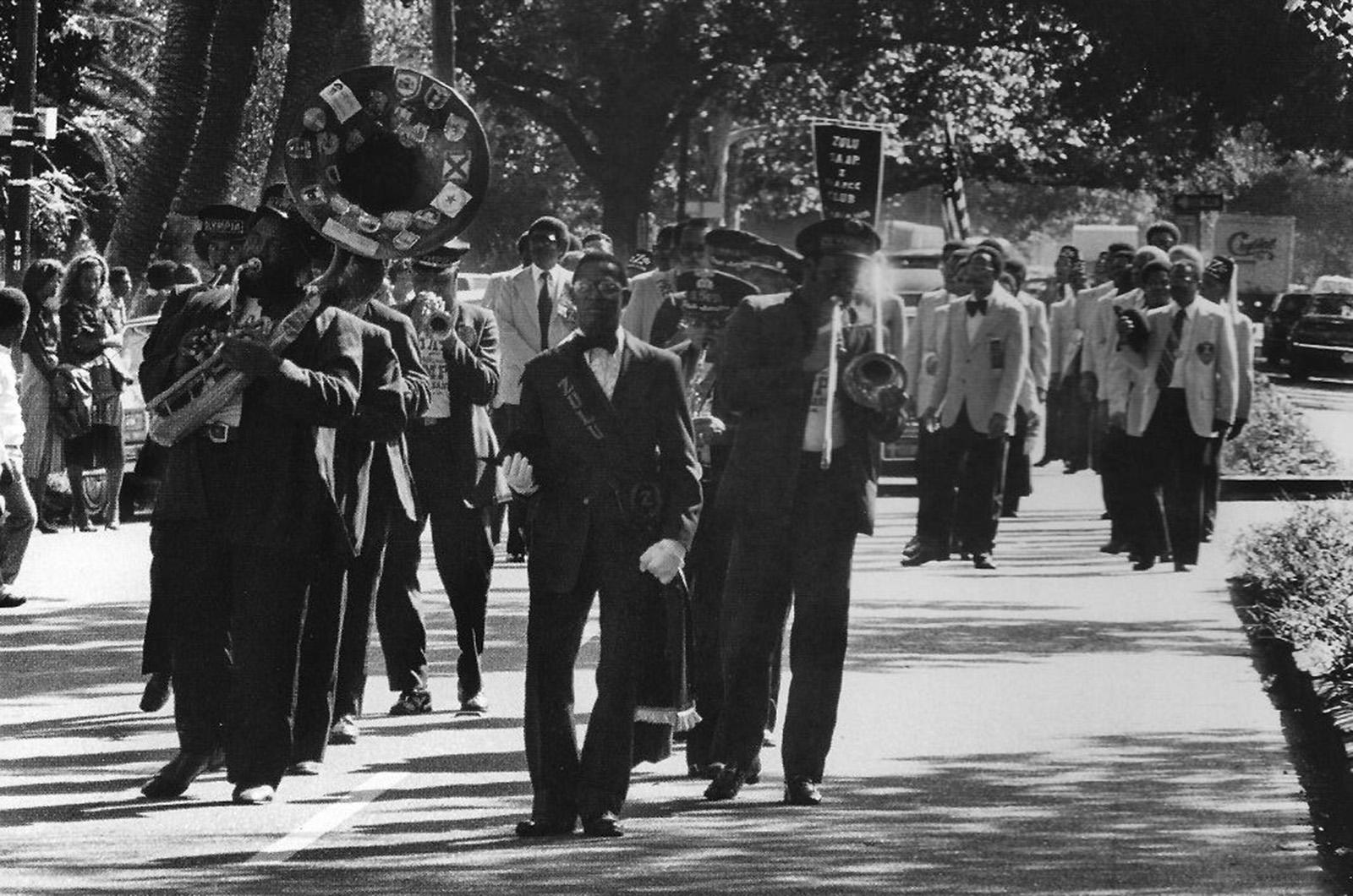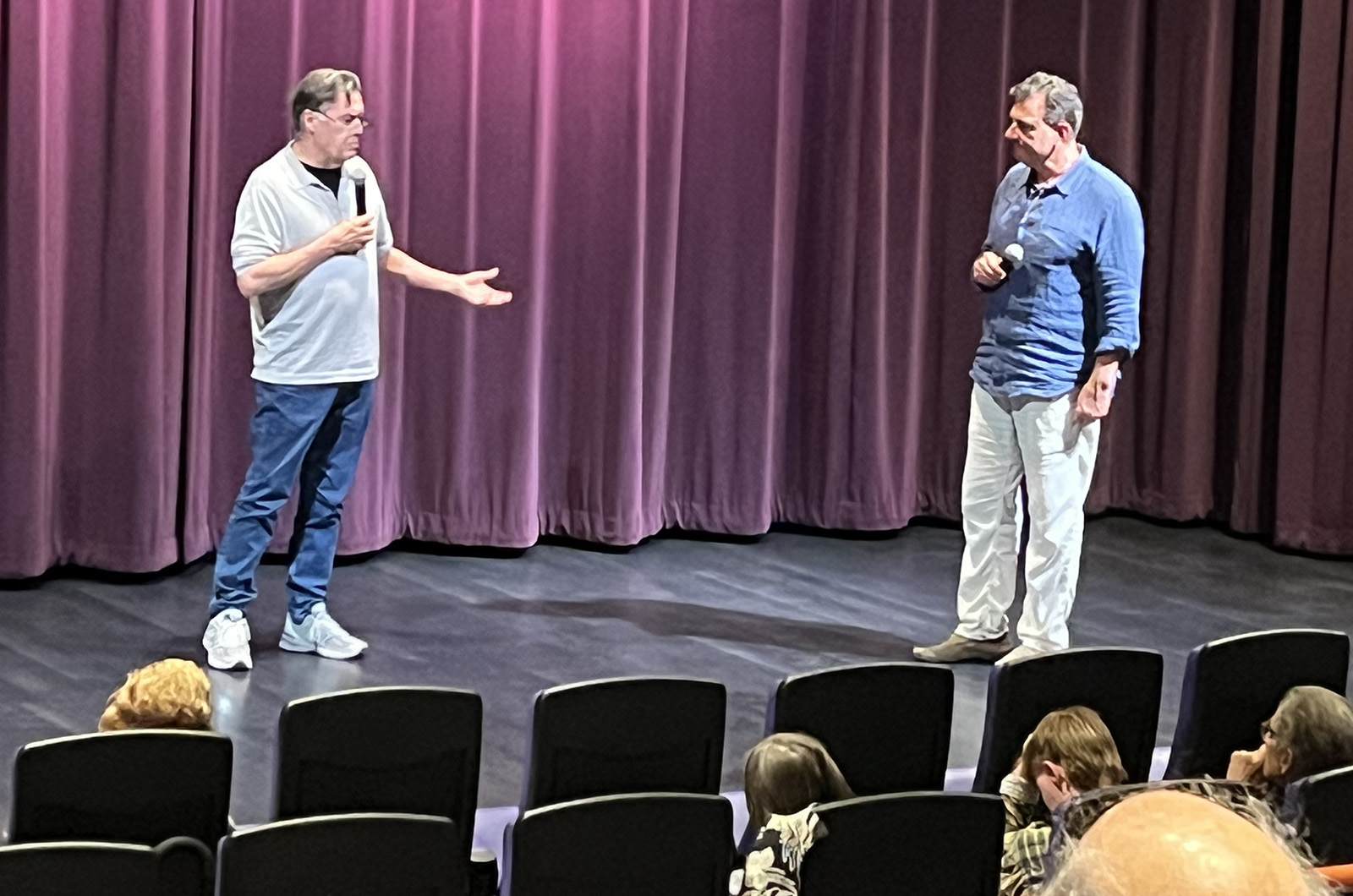Journalist, author and filmmaker Jason Berry took decades to create his new documentary about New Orleans jazz funerals, a tradition unique to the city where he was born.
“I started filming funerals with music in the 1990s,” Mr. Berry told the audience at last Friday’s screening of City of a Million Dreams: Parading for the Dead in New Orleans, at the Martha’s Vineyard Film Center in Vineyard Haven.
A longtime New Orleans journalist, Mr. Berry wrote the 1992 book Lead Us Not Into Temptation: Catholic Priests and the Sexual Abuse of Children, the first book on what has proved to be an international scandal. He followed it up in 2004 with the book and film Vows of Silence.
Mr. Berry is also a longtime scholar of jazz and a co-author, in 1986, of the widely-read history Up from the Cradle of Jazz: New Orleans Music Since World War II. While that book focused on postwar years, studying jazz funerals took him all the way back to the beginning of New Orleans three centuries ago.
“This is a profoundly spiritual tradition, [and] a mirror of the history of the city,” said Mr. Berry, who made the film while writing his latest book, City of a Million Dreams: A History of New Orleans at Year 300.
Both film and book explore the origins of the city’s jazz funerals, street parades and the “second line” of dancers who flock to these events. To tell his story, Mr. Berry combined contemporary video with archival footage, still photographs and illustrations from New Orleans as it emerged under the rule of Spain, France and the United States.
All three nations supported chattel slavery, with the Spanish first to pack their ships with abducted West Africans to do the new colony’s hard labor. Deprived of their freedom, the enslaved people held on to their cultural traditions and spiritual beliefs. In New Orleans’s Congo Square, they were allowed to gather on Sundays for African-style ring dances accompanied by drums — a custom powerfully reenacted for the film by a Black choreographer and dancers with West African percussionists.
The Europeans who settled in New Orleans brought traditions of their own, including funerals with music and bands that marched in a line.
Mr. Berry’s film shows how the cultural streams began to flow together over the centuries, with the solemn funeral band and vigorous ring dance combining their energies with gospel hymns and jazz.
Stepping slowly to the church while playing songs about heaven, New Orleans funeral bands turn up the energy with hot jazz numbers on their way back, joined by second line dancers who quickly fill the streets around the first line of musicians.
This revelry links to both Christianity, which holds that heaven is a better place, and the beliefs of early enslaved people that their deaths would send them back to Africa, according to Mr. Berry’s film.
By the mid-20th century, marching bands were also taking part in street parades organized by the city’s famous social aid and pleasure clubs such as the venerable Zulu organization, founded in 1916.
But by the 1990s, New Orleans was suffering from the twin epidemics of crack cocaine and gangster culture, which spurred the deaths of many young men. The film’s footage of angry mourners, spraying beer on a coffin and chanting slogans during the funeral procession, bears out the concerns that veteran musicians expressed to Mr. Berry at the time.
“They felt a certain spiritualism was... being removed,” he said at the film center.
Jazz legend Danny Barker, a mentor to many younger players including Wynton and Branford Marsalis, was so disturbed by the gangster influence that before he died in 1994, he told his wife not to organize a jazz funeral at all. But younger musicians vowed to the widow that they’d make sure it was done right, and Mr. Barker’s funeral procession is one of many inspiring moments in the film.
Northerners’ eyes may widen at some other sequences, including a funeral jam session with the widower on vocals, a couple dancing by the open coffin and a saxophonist playing a solo directly into it. But that’s New Orleans, where death and life are always side by side and even the coffins remain above ground in the low-lying city’s famous crypts.
“I think how a society buries people speaks volumes about how it values the living,” Mr. Berry said.
City of a Million Dreams: Parading for the Dead in New Orleans screened as part of the film center’s annual Filmusic festival, which ended Sunday.
Mr. Berry is still seeking distribution for his film, but another absorbing new documentary from the festival can be seen on HBO Max: Love to Love You Donna Summer.
A revelatory look at the actress-singer who went, via Germany, from Boston’s Mission Hill to the top of the charts, the film will astonish those who think of Ms. Summer simply as a disco diva.
In fact, the hits she made were usually songs she wrote or co-wrote — all the way back to her anthem Love to Love You — and the role she played on stage was simply that: an actor, acting a part she’d written for herself.
Home movies of family talent shows and dances testify to a vibrant, arts-friendly upbringing, while a clip from a 1968 German production of Hair shows the young performer on the cusp of her future as she ushers in the Age of Aquarius (“Alter das Wassermans”).
Ms. Summer’s speaking voice, with its ineradicable Boston accent, is heard throughout the documentary in interviews and recordings made over the years before she died of cancer in 2012.
Directors Roger Ross Williams and Brooklyn Sudano, Ms. Summer’s second daughter, also take advantage of digital technology to animate contact sheets from photo shoots, bringing Ms. Summer’s album covers and publicity shots to lifelike movement.
The film’s archival footage of men at gay discos, dancing ecstatically to Summer’s music in the pre-AIDS years, feels at once liberating and heartbreaking — particularly in the light of her “not Adam and Steve” onstage gaffe a few years later, which — with her subsequent apology — also forms part of the film.





Comments
Comment policy »